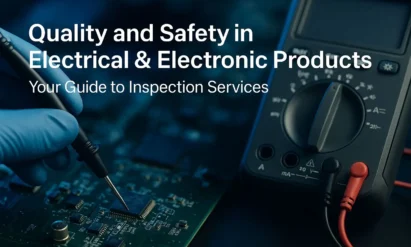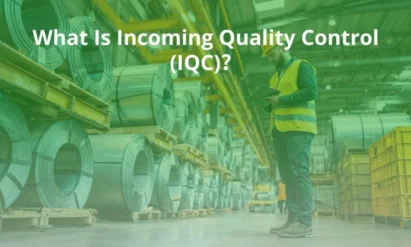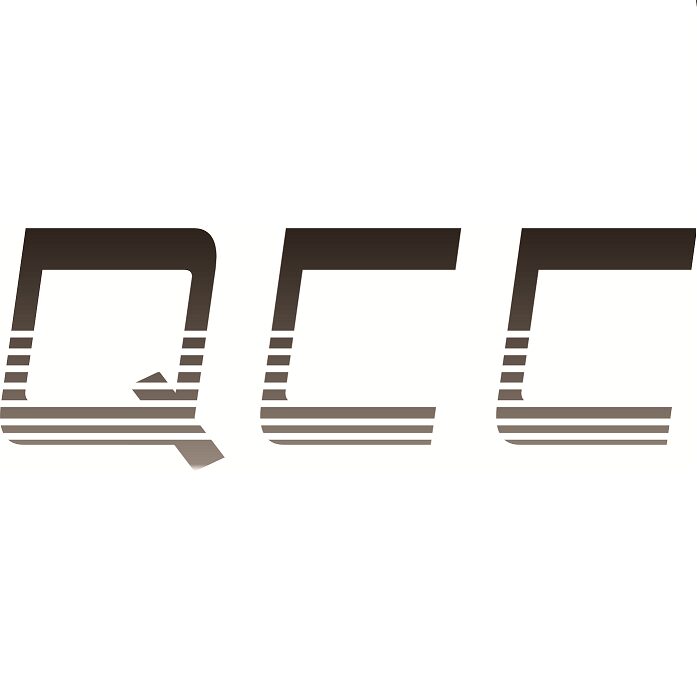Sample Checking in Manufacturing: Best Practices for 2025
Jun 05,2025
In an age where product quality can make or break a brand, sample inspection has become a critical part of quality assurance in the manufacturing industry.
With rising consumer expectations, increasingly stringent regulations, and increasingly complex global supply chains, adopting best practices for sample inspection is essential to maintaining consistency, minimizing defects, and staying competitive in 2025.

This blog explores what sample inspection is, why it is more important than ever, and how manufacturers can optimize their approach to achieve maximum benefits.
What is Sample Checking?
Sampling inspection is a quality control method where a small, representative sample of products is selected and carefully examined to ensure that they meet established specifications and quality standards.
Unlike more widespread statistical sampling techniques, this approach emphasizes in-depth analysis of smaller product groups, allowing for a more targeted assessment of overall product quality.
By identifying defects or inconsistencies early in the production process, sampling inspection gives buyers and suppliers the opportunity to resolve issues before full production or shipment begins.
Sampling inspection offers a more cost-effective and time-efficient quality verification solution than inspecting products one by one. It enables reliable assessment of compliance across an entire batch while minimizing the use of inspection resources.
Why Perform Sample Checking?
Implementing sample inspections has many benefits that help manage and improve product quality, including:
Cost-effective, time-saving and labour-saving: It is cheaper and faster to inspect only a small number of samples than to inspect all products in a batch. This helps speed up decision-making and ensure that production schedules are on track.
Early detection of problems: By inspecting samples before mass production, potential defects and problems can be discovered early, thus avoiding larger-scale problems or delays later in the production cycle.
Ensure product consistency: Sample inspections help ensure that the entire batch of products meets the agreed specifications and standards, thus avoiding differences between samples and final products.
Informed decision-making: Sample inspections provide detailed reports that provide you with all the necessary details to help you decide whether to approve the batch, request changes, or explore different suppliers.
Build trust in the supply chain: Sample inspections through third-party inspection services can build trust between buyers and suppliers, ensuring that both parties have consistent expectations on product quality.
Characteristics of Sample Checking
Sample checking stands out due to its key characteristics, which include:
Small Sample Size
Only a few products are selected for inspection, representing the whole batch, making it more manageable and cost-effective.
Standardized Environment
The inspection is conducted in a controlled environment by professional inspectors, ensuring consistent and unbiased results.
Comprehensive Inspection
The inspection covers multiple aspects of the product, including appearance, functionality, packaging, labeling, and compliance with specifications.
Objective and Defined Criteria
The sample checking process follows predefined checklists based on agreed-upon standards, ensuring objective evaluation.
Indicative Results
Since only a small sample is checked, the results provide an indication of the overall batch’s quality, but it doesn’t guarantee the entire batch’s consistency.
Quick Feedback
Sample checking typically results in a detailed report within 24 to 48 hours, allowing for quick and informed decisions.
Key Checks Conducted During Sample Checking
When conducting sample checking, several critical aspects of the product are carefully examined to ensure quality and compliance:
- Visual and Workmanship Inspection: Identifying visible defects such as scratches, dents, discoloration, misalignments, or poor assembly quality.
- Dimensions and Specifications: Verifying that the product meets the required measurements, tolerances, and design specifications.
- Functionality Testing: Confirming that the product performs as intended. For example, ensuring a water bottle is leak-proof or that an electronic device powers on and operates correctly.
- Packaging and Labelling: Checking that the packaging is secure, labels are accurate and legible, and all necessary safety warnings and regulatory markings are present.
Example: In the case of a stainless steel water bottle, sample checking may include inspecting the surface for scratches, verifying that the logo is correctly printed, confirming the capacity is accurate (e.g., 500ml), testing for leakage, and ensuring the packaging aligns with branding and structural requirements.
Sample Checking Service
Sample checking services are commonly provided by third-party quality inspection companies. These services involve sending product samples to a professional inspection agency, where trained experts follow a comprehensive checklist to thoroughly evaluate the samples against predefined standards.
Sample checking is especially beneficial in the following scenarios:
New Product Launches: To confirm that newly developed products meet all required specifications before moving into mass production.
First-Time Orders with New Suppliers: To ensure the supplier can deliver products that align with agreed quality standards.
Pilot Production Runs: To assess the quality of a small batch before committing to full-scale manufacturing.
Upon completion, the inspection agency delivers a detailed report that includes defect descriptions, dimensional measurements, photographs, and functional test results.
This allows you to make informed decisions quickly—whether to approve production, request modifications, or consider alternative suppliers.
Sample checking serves as a valuable complement to other quality assurance methods, such as in-line or pre-shipment inspections, by offering early-stage verification that can prevent costly issues later in the production process.
How QCC INSPECTION Can Help?
At QCC INSPECTION, we specialise in providing professional sample testing services for a wide range of industries, including electronics, textiles, and industrial products.
Our experienced testing team will conduct a comprehensive evaluation of your product samples to ensure that they meet your quality requirements and comply with all relevant industry standards.
We work closely with you to develop a personalised testing plan that focuses on the key quality aspects unique to your product. Whether your testing is conducted at our state-of-the-art facilities or through one of our trusted partners, we can provide you with consistent, objective, and reliable results.
After each test, we provide a clear and detailed report with photos, measurements, and test results to help you make timely and informed decisions.
Choosing QCC INSPECTION for your sample testing needs will add important quality assurance to your supply chain, minimising risk, maintaining your brand reputation, and ensuring that your products consistently meet customer expectations.
--- END ---
Products
Get A Free Quote
Related Blogs
QCC SAMPLE REPORT
For sample reports or custom checklists, please contact us – we're here to assist you.


 November 28,2025
November 28,2025

